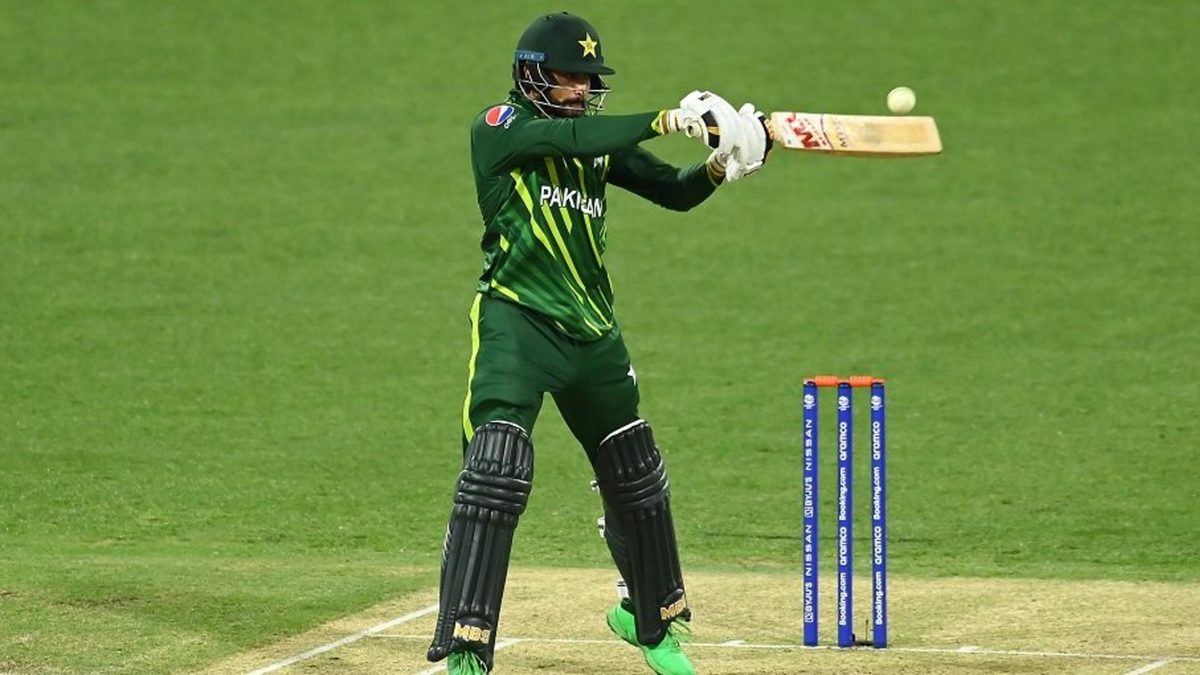
Pakistan’s strategy of promoting Mohammad Nawaz to No.4 has come off three times in three attempts. It is based on a specific plan that they are likely to implement again.
Pakistan were cautious in their chase in that Asia Cup Super Four match against India. When they lost their second wicket, they needed another 119 from 68 balls. To the surprise of many, out strode Mohammad Nawaz.
Until this point, Nawaz had batted only 14 times in 32 T20Is. He was promoted to No.3 once, in 2018, but that was it. He had never otherwise batted in the top six. Even today, his median batting position is No.7. While he was invaluable as a bowler who could hit down the order, this was not a role Pakistan had used him for. Even in the PSL, Nawaz has batted only once at No.3 and twice at No.4.
Yet, you could see the logic. Bhuvneshwar Kumar and Arshdeep Singh, having bowled inside the powerplay, were expected to return at the death. Of India’s middle-overs bowlers, Yuzvendra Chahal and Ravi Bishnoi spun the ball into Nawaz; and despite his amazing resurgence in 2022, Hardik Pandya is essentially a batter who bowls.
Nawaz raced to 20 off the first nine balls he faced. India recalled Arshdeep. He attempted two yorkers at Nawaz. One was overpitched, and Nawaz picked up four with a straight drive. He survived the other, and hit four fours off the next six balls he faced.
It took Bhuvneshwar two slower balls to strike. Nawaz pulled and missed the first, and mistimed the second. By then, however, he had done enough damage, with an 20-ball 42. Against the three bowlers he was expected to take on, he had scored 38 in 14 balls.
Pakistan had already qualified for the final of the tri-series in New Zealand when they repeated the Nawaz experiment. This time they needed 77 in 43 balls. Mustafizur Rahman, one of Bangladesh’s two outstanding bowlers, was not playing. The other, Shakib Al Hasan, had two overs left – but would spin the ball into Nawaz.
Before that, there was an over from Taskin Ahmed, occasionally erratic but a bowler of genuine pace. Taskin pitched short twice. Nawaz pulled both; he top-edged the other but the ball landed safely. Taskin had bowled out. It would be only Shakib and medium or medium-fast from thereafter.
When Shakib bowled the next over, Nawaz did exactly what he was expected to: he finished the over with four, six, four. Bangladesh were still in it – Pakistan needed 45 in five overs – but Nawaz had done his job. Nawaz stayed put until the end for a 20-ball unbeaten 45, so Shakib never backed himself to bowl his final over.
The rough cut had got its approval. Pakistan now braced themselves for the final, where they would be up against Ish Sodhi, one of only five bowlers in the world to have taken more than 100 T20I wickets – but also a man who would turn the ball into Nawaz.
Pakistan were chasing only 164, but Michael Bracewell was superb with his off-breaks. When Nawaz came to bat, Pakistan needed 100 in 59 balls, but Bracewell had only five balls left. These were negotiated without risk and boundaries. Trent Boult and Tim Southee would return at the death. It would be Sodhi and Blair Tickner for now.
Nawaz did not face much in Sodhi’s next over, but he got Tickner. Taking a leaf out of Bhuvneshwar’s book, Tickner took the pace off. Nawaz did not middle many but picked up two fours. Boult’s next over was seen off.
He faced only two balls in Sodhi’s next over. He hit two sixes. He faced Tickner again. He hit a six. Pakistan won in the final over. Nawaz walked away with an unbeaten 22-ball 38.
Nawaz’s three innings at No.4 – two of them unbeaten – have yielded 125 runs at a strike rate of 202. It is a small sample, but nothing about the rest of his career (26 innings, 229 runs at 116) suggests anything remotely close to these explosions. Neither does his career Twenty20 strike rate of 126.
Pakistan have used a batter in an uncharacteristic yet efficient role thrice in two months now, in the middle orders, against attacks consisting of less-than-express seamers and spinners who turn the ball into the left-hander.
Pakistan’s batting strategy revolves around Babar Azam and Mohammad Rizwan extending the opening stand as much as possible. The opposition is likely to attack them with their strike bowlers, and use the other seamers and spinners in the middle overs. They may promote Nawaz again at the T20 World Cup, and beyond.








